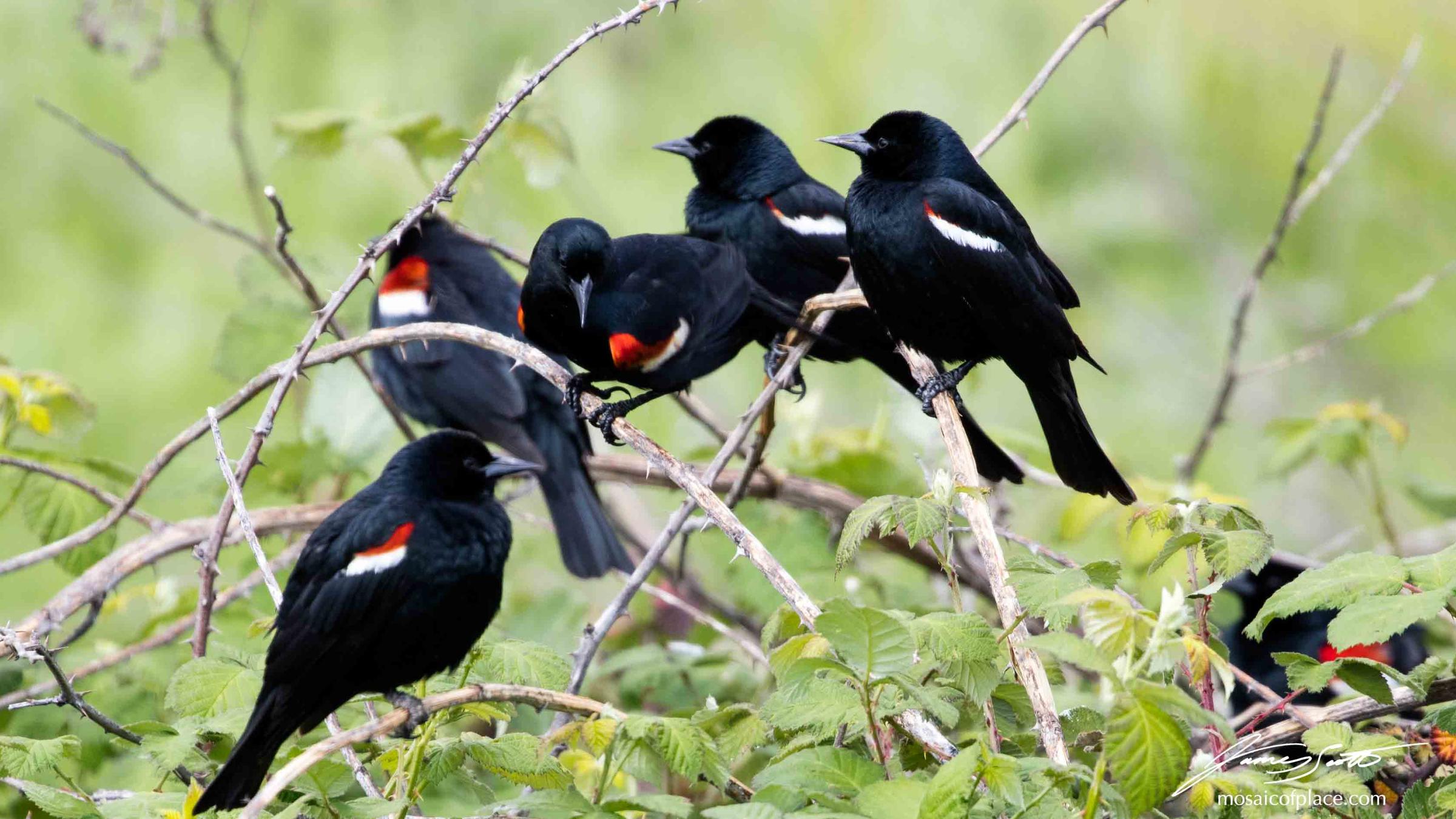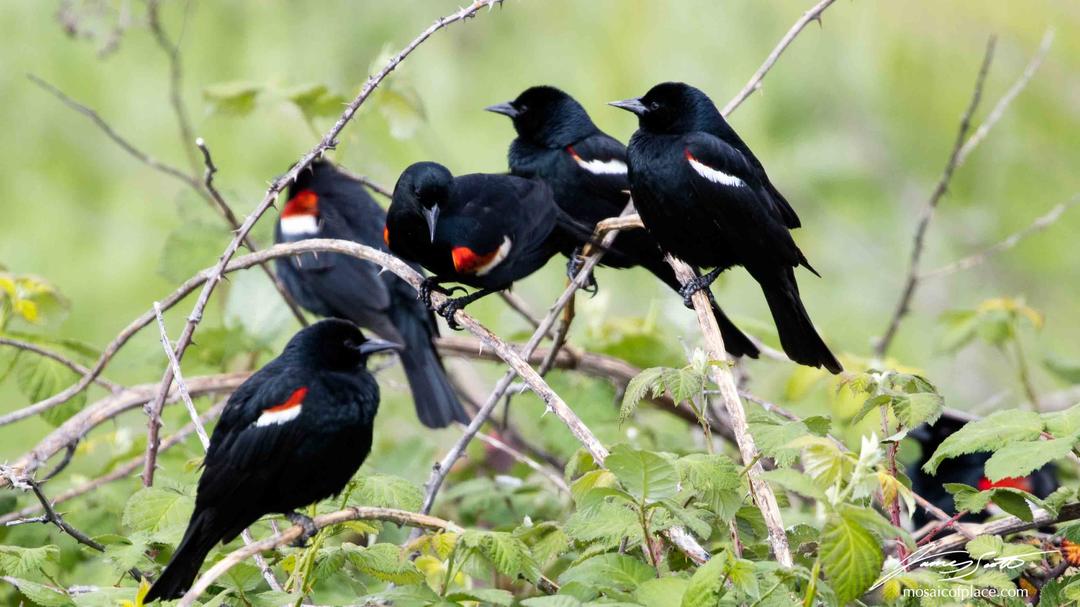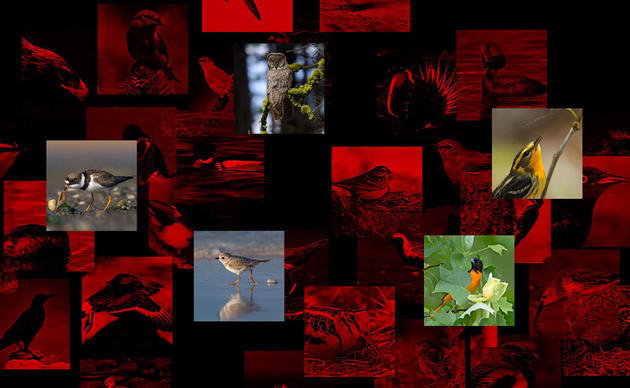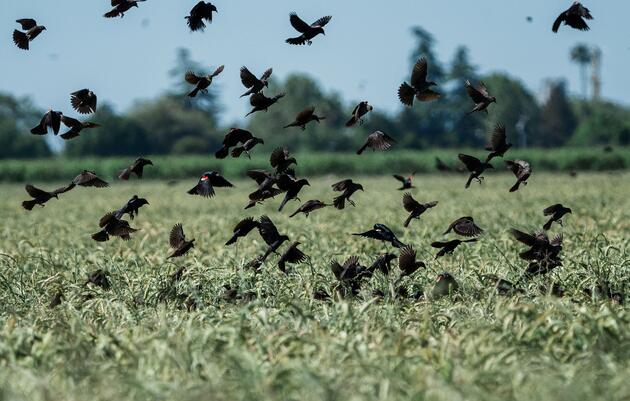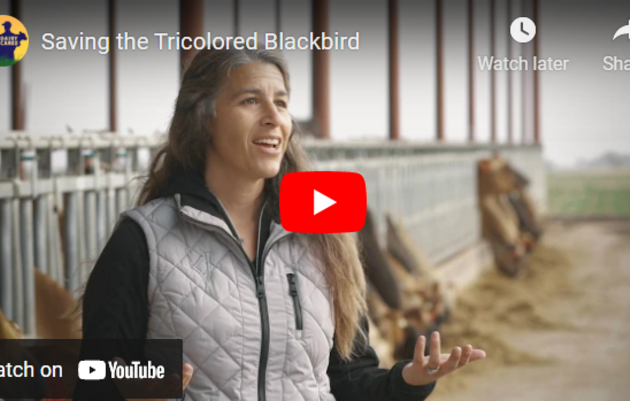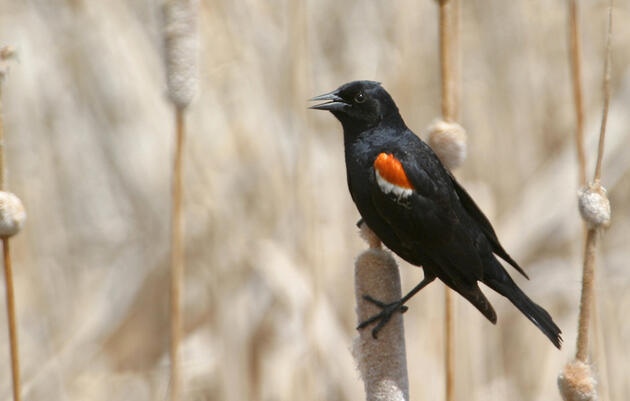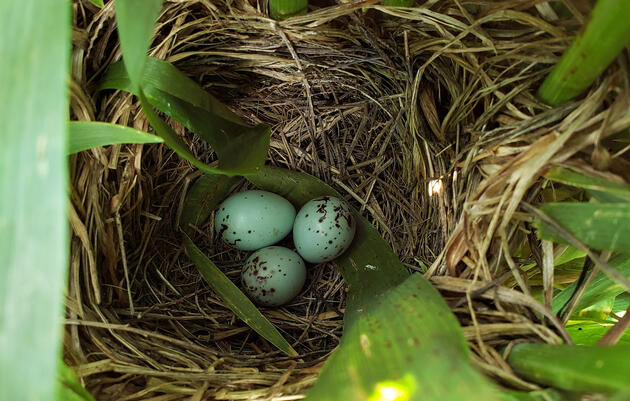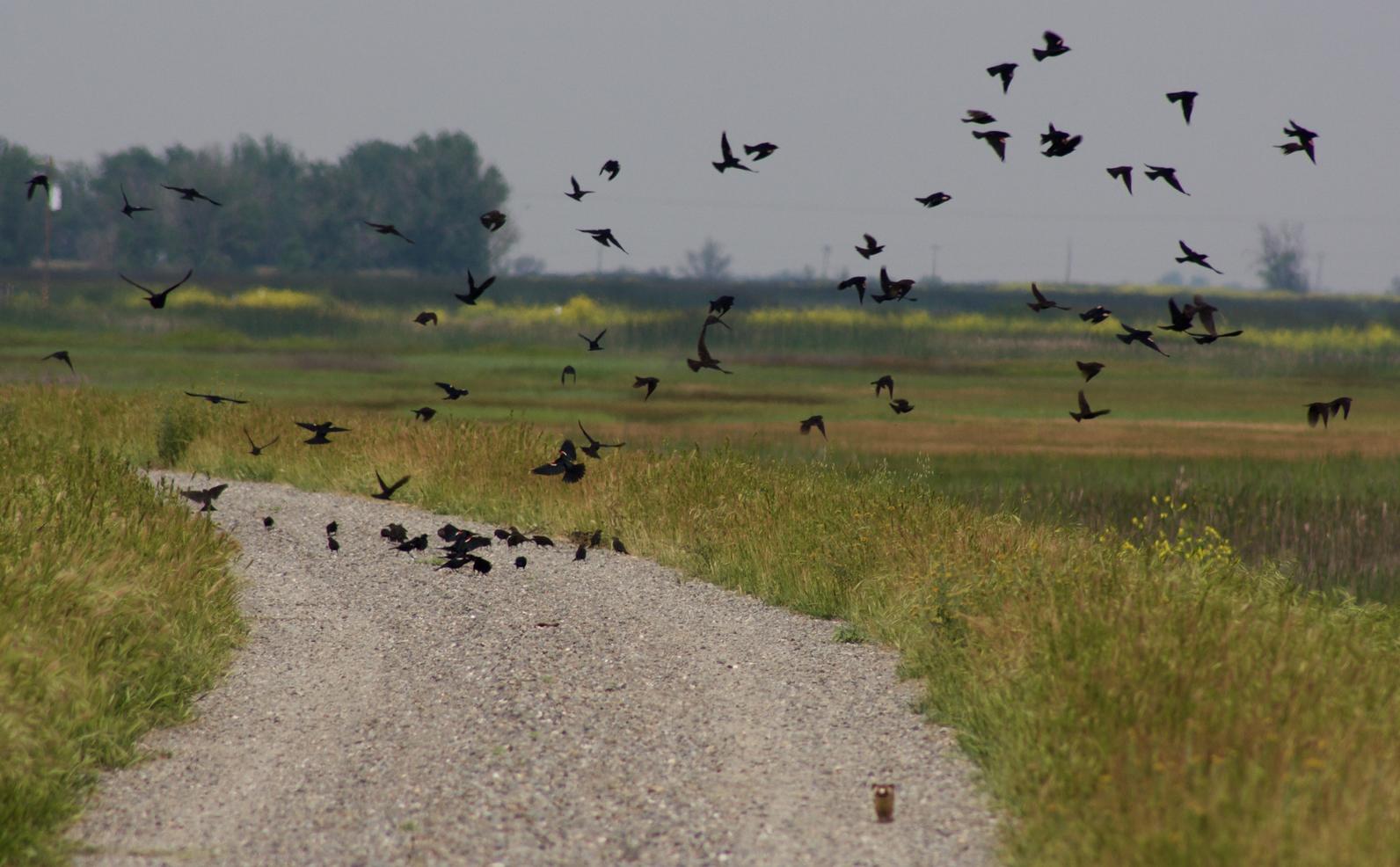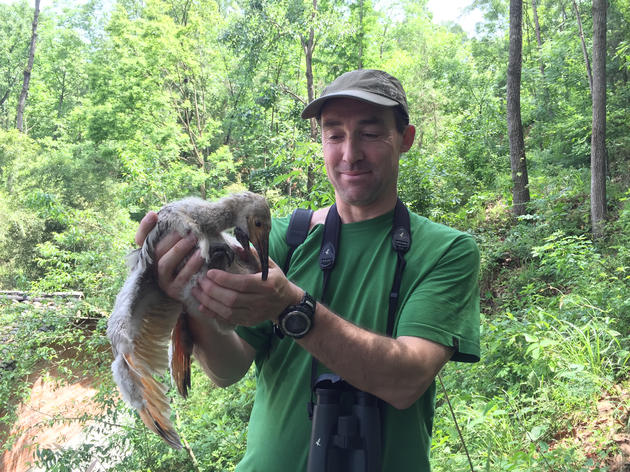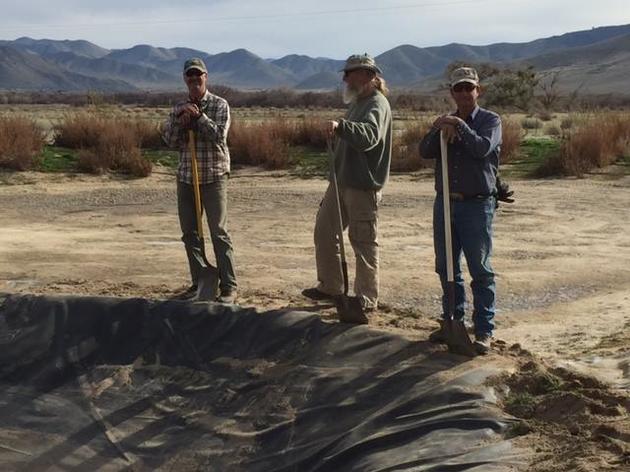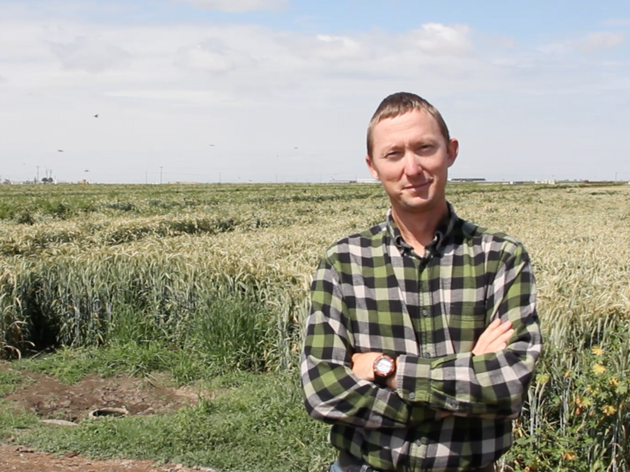The Tricolored Blackbird is North America's most colonial nesting landbird. Found almost exclusively in California, a single breeding colony can teem with over 35,000 birds, sometimes all settled into a single field or small wetland to raise their young. While similar to the more widespread Red-winged Blackbird, the male Tricolored Blackbird is distinguished by its red shoulder patch with a bright white wing-bar.
In the 19th century, Tricolored Blackbird flocks were described as numerous and often consisted of hundreds of thousands of birds. Since then, the population has declined from several million to approximately 177,000 today. Over a 10-year period from 2007 to 2016, it is estimated the population declined by as much as 34%.
There are many reasons for this decline. But the loss of native wetland and nearby foraging habitats along the coast and in the Central Valley is the main issue. In more recent years, the species has become dependent on agricultural lands, with most of the largest colonies nesting in grain fields. A real dilemma develops as Tricolored Blackbird young typically have not yet left the nest before the time farmers need to harvest their crop, and harvesting destroys Tricolored Blackbird nests and young. In some cases, tens of thousands of nests have been lost in a single field.
Each year, these birds gather in highly social colonies to raise their young throughout the San Joaquin Valley, Sacramento Valley, Sierra Foothills, Central Coast, and Southern California. However, with the continuing loss of habitat and the places they need to survive are becoming scarcer. As a result of this continued habitat loss and drastic population decline, Tricolored Blackbirds were recently listed under California's Endangered Species Act thus highlighting the recovery of this species is more critical than ever.
Audubon California's Xerónimo Castañeda shows us a great Tricolored Blackbird colony in the Central Valley.
Tricolored Blackbirds Once Faced Extinction—Here's What's Behind Their Exciting Comeback
For a decade Audubon California and partners have worked with farmers to delay harvests where the birds nest, solving what was once the biggest threat to the species.
Farmers Play Key Role in Protecting Tricolored Blackbirds
Watch this video by Audubon's partner Dairy Cares in the Central Valley
Collaborative Conservation
We work closely with landowners and partners in the Tricolored Blackbird Working Group to protect the Tricolored Blackbird across California.
How Private Landowners Can Save Tricolored Blackbirds
Farms and ranches will play a critical role in conserving Tricolored Blackbirds across the Central Valley.
Latest News
Valley Public Radio joins Audubon California for Tricolored Blackbird tour
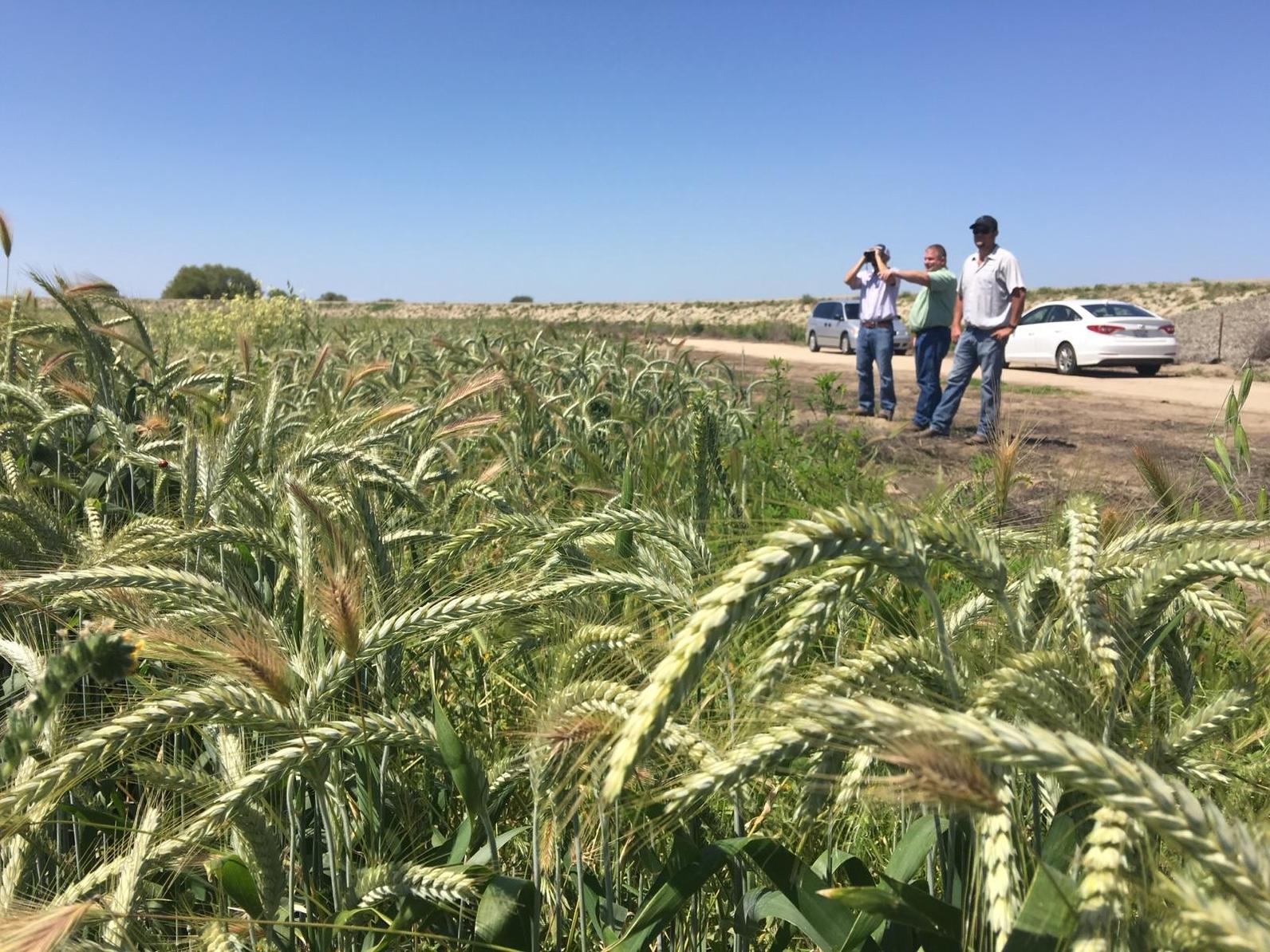
Valley Public Radio producer Ezra David Romero spent the day with Tricolored Blackbird conservation program manager Samantha Arthur and our partners at Dairy Cares, NRCS, and Merced National Wildlife Refuge to see what it takes to help keep a species safe to reproduce. Listen to the story here.
Tricolored Blackbirds nesting in the Central Valley
Ian Souza-Cole, field technician for Audubon California, got some great photos of Tricolored Blackbirds in the Central Valley last week. We're working hard to make sure that these colonies are protected, and the young birds are able to fledge. Rapid declines have put this species on the brink in recent years. You can help the birds right now.
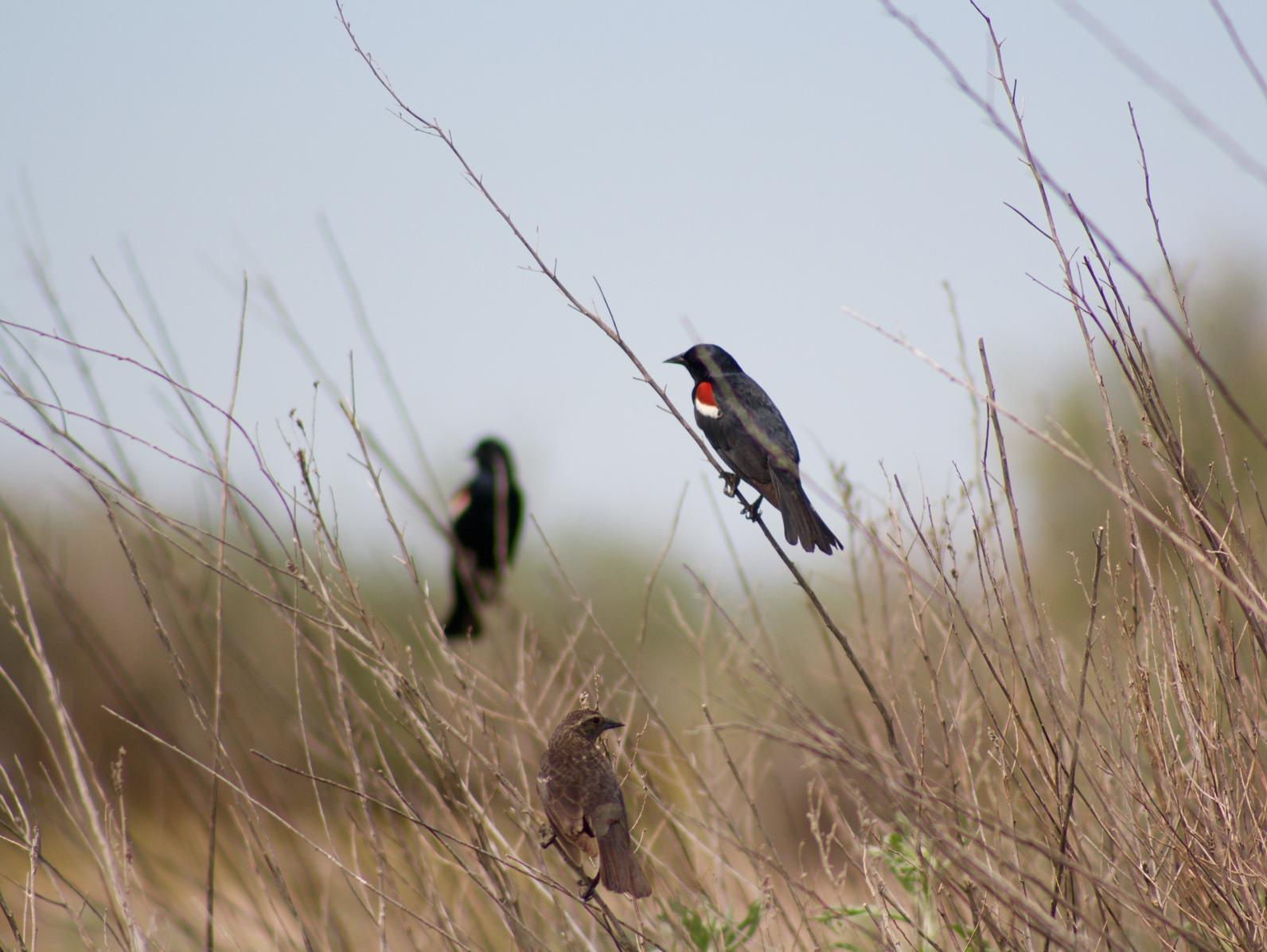
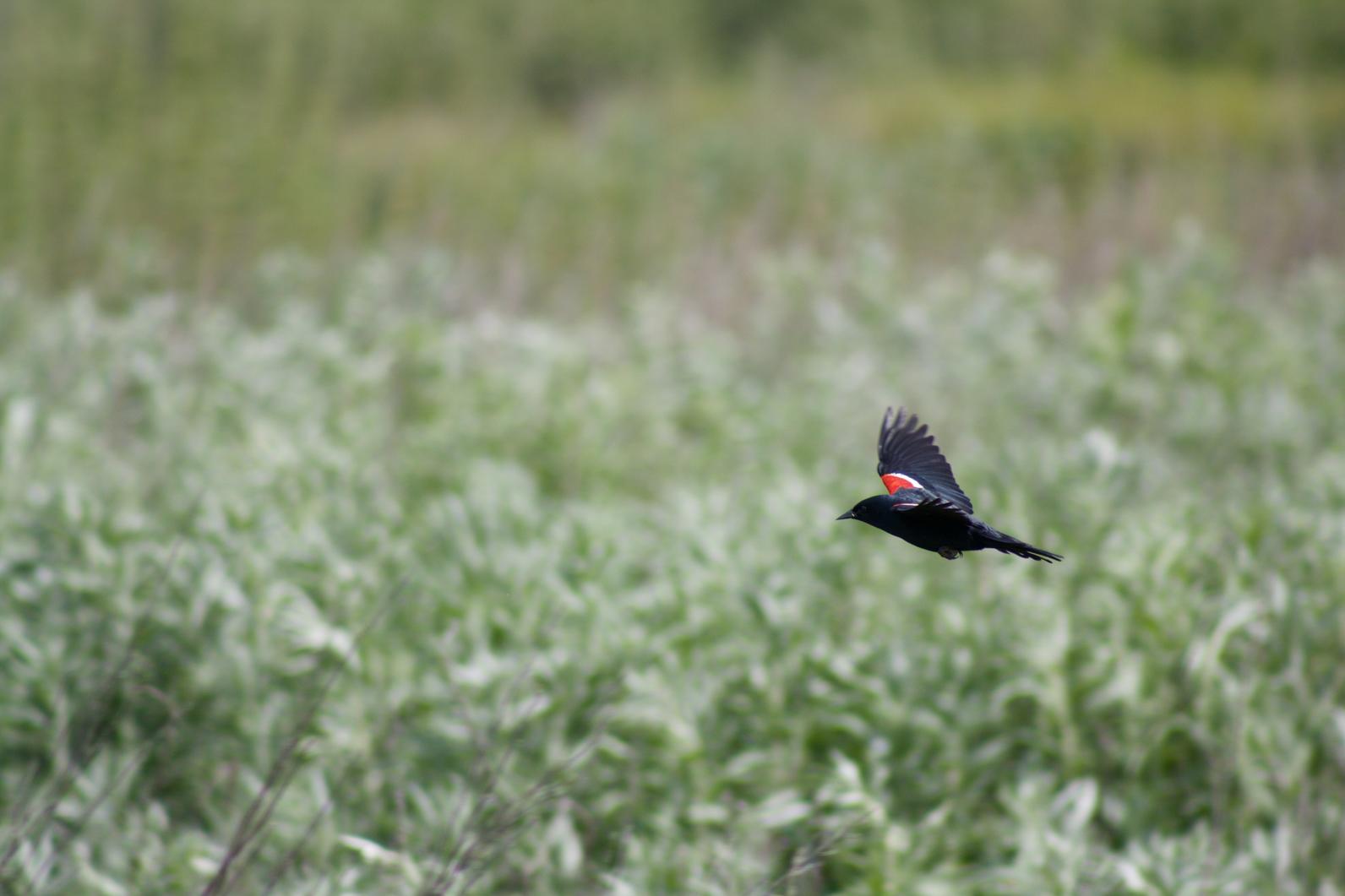
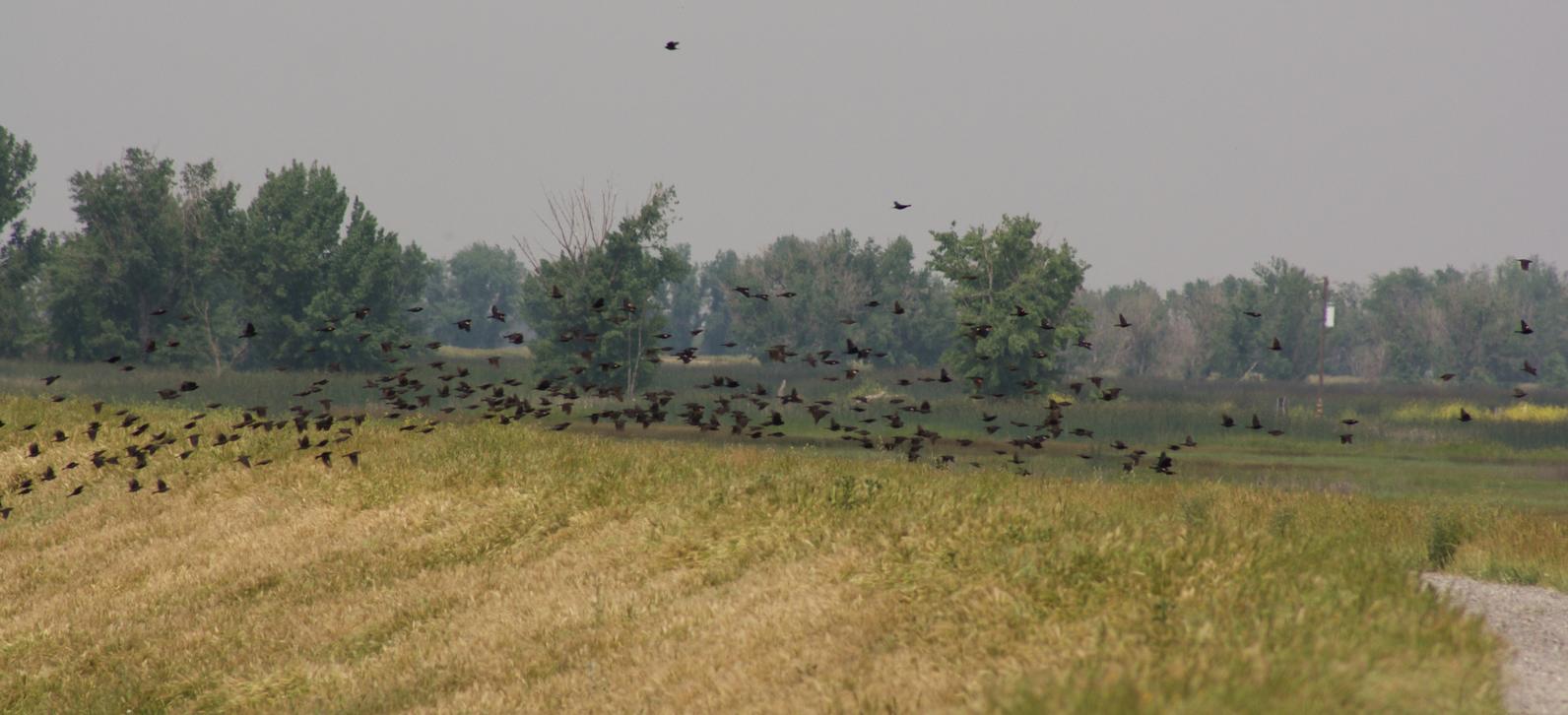
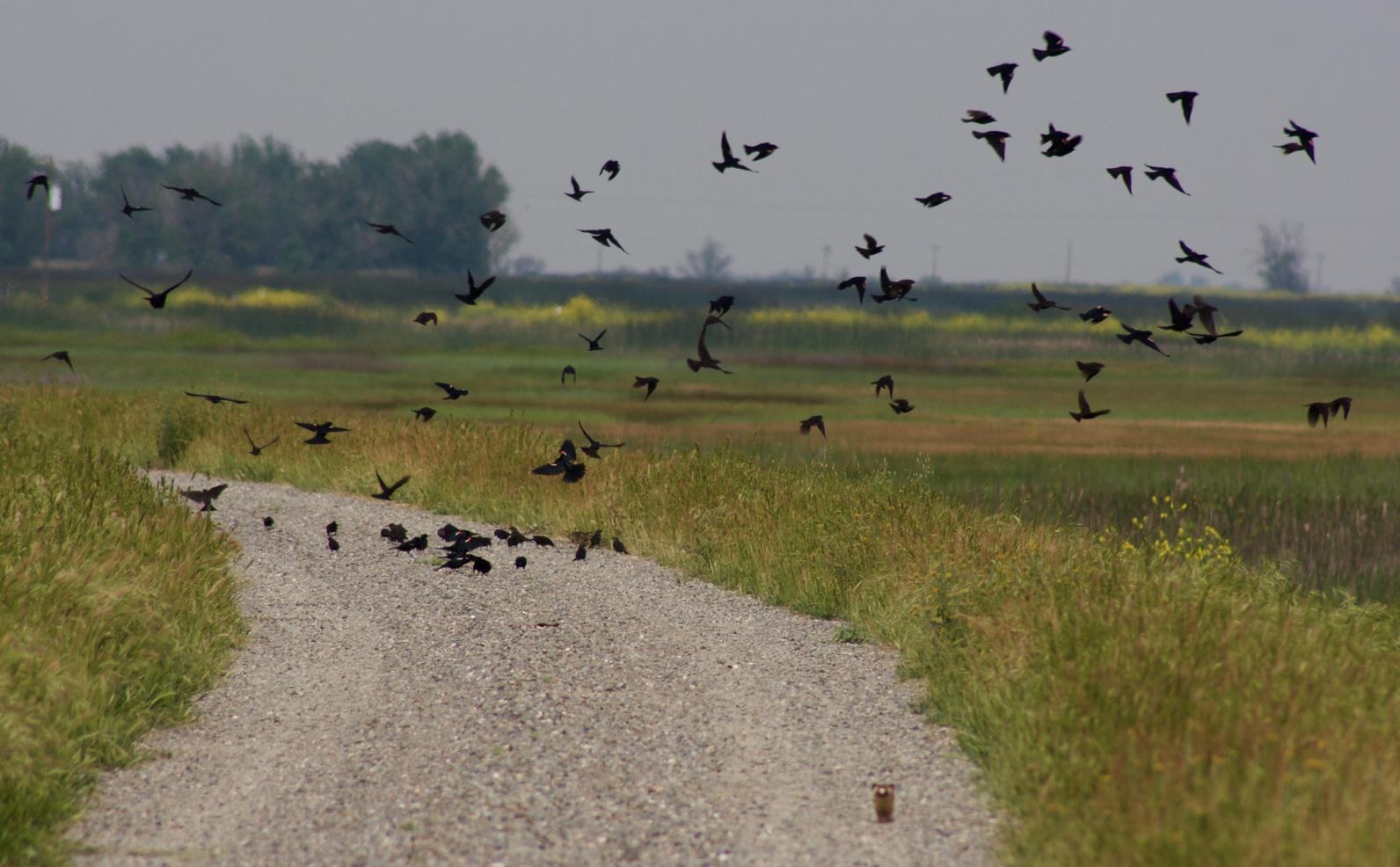
Trikes on NPR
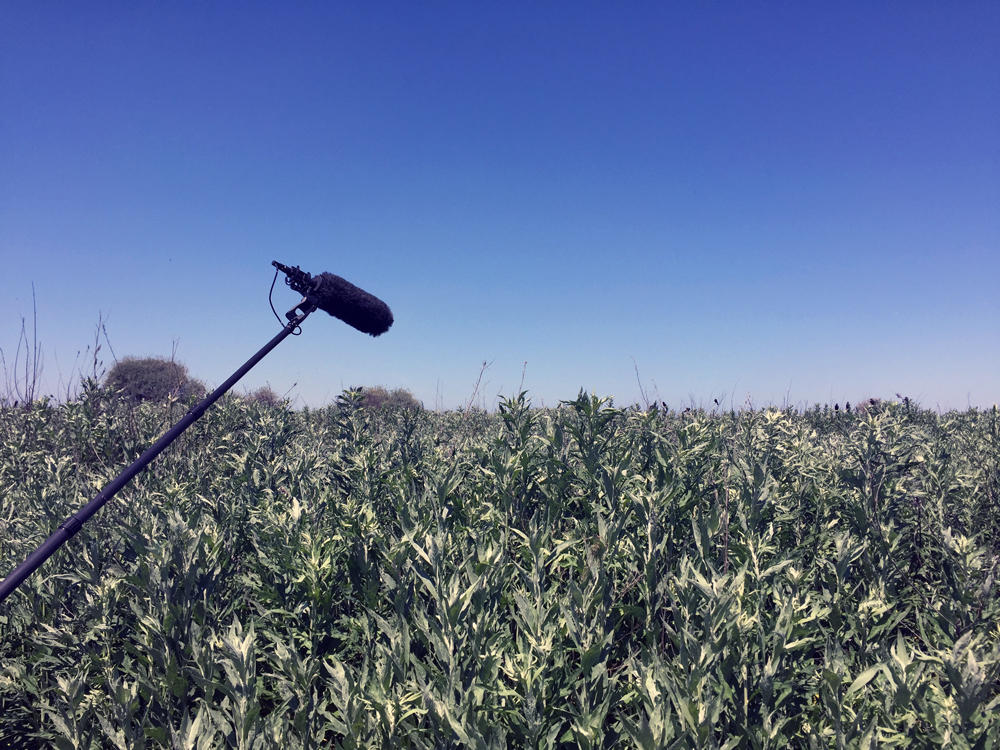
Samantha Arthur, conservation program manager, spent last week with Valley Public Radio's Ezra Romero. They hiked around Tricolored Blackbird colonies at Merced National Wildlife Refuge and a Fresno County dairman's property. The story will air tomorrow on NPR.
Good news from Merced National Wildlife Refuge
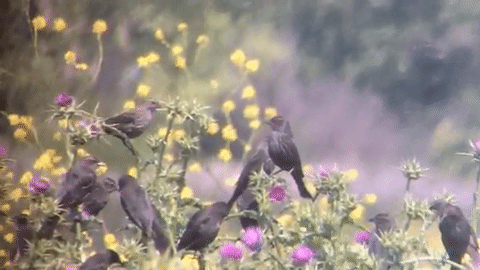
From Tricolored Blackbird Program Manager Samantha Arthur:
Great news! There are TWO colonies of Tricolored Blackbirds nesting at our Merced National Refuge enhancement site with each group being roughly 5,000 birds. These breeding families are benefiting from the silage planted with funds raised from you during last years $5/5 Birds Campaign. Will you help us reach this year's goal? We are only $5,000 short of making our $15,000 match. You can make your gift here.
Thousands of Tricolored Blackbird nests at risk on dairy farms right now
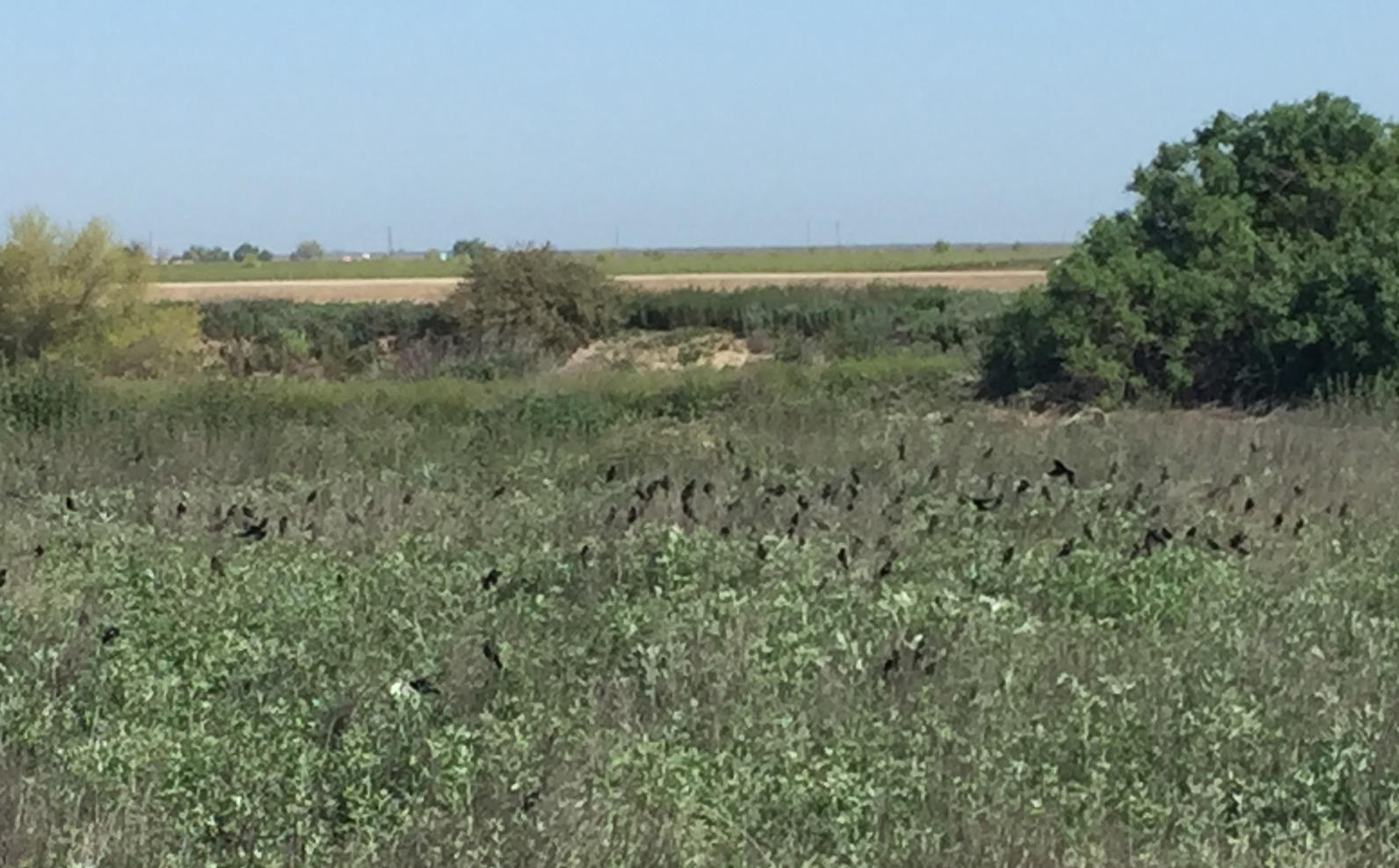
We just received word from the field from Samantha Arthur that our staff has identified about 35,000 to 45,000 Tricolored Blackbird nesting on dairy farms in Kern, Tulare, and Merced counties. Those numbers are likely to change a little as the nesting season continues, but it's important to understand that each and every one of these nests is in danger of being destroyed unless we're able to strike agreements with farmers to delay harvest until the chicks have fledged. Thankfully, we're better prepared for this possibility than ever before. We're working closely with the dairy industry and government agencies to identify nesting colonies and get them protected.
This work is difficult and is more important now than ever. Tricolored Blackbirds are in a steep decline, so every colony is vital to the survival of the species. The California Fish & Game Commission recently made it a candidate for listing under the state Endangered Species Act. Learn more about the species here.
Please consider making a donation to our Tricolored Blackbird campaign. Every dollar of your contribution goes into preserving a future for this important California bird.
More than 35,000 Tricolored Blackbirds found nesting in dairy fields, so far
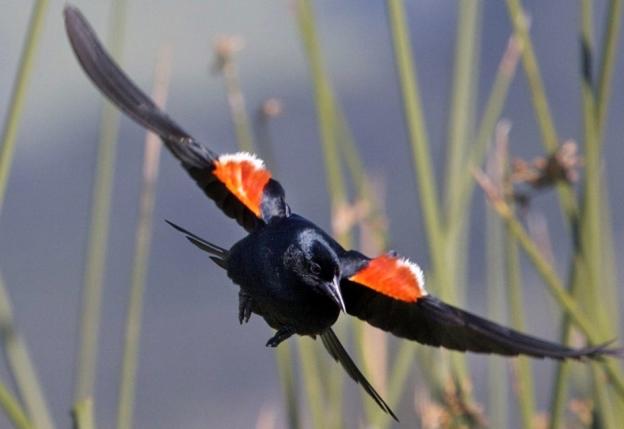
Just got a message from Samantha Arthurs, who runs Audubon California's Tricolored Blackbird conservation efforts, that she and others have identified "35,000 to 45,000 Tricolors nesting on dairies right now in Kern, Tulare, and Merced counties." These nests are at risk of destruction if we're not able to work with our partners in the dairy industry and federal agencies to protect them. Learn more about our program and, if you can, make a donation to our Tricolored Blackbird campaign. This is a file photo -- we hope to have photos from the field today.
How you can help, right now
Get Audubon CA in Your Inbox
Our newsletter is fun way to get our latest stories and important conservation updates from across the state.
Donate to Audubon
Help secure the future for birds at risk from climate change, habitat loss and other threats. Your support will power our science, education, advocacy and on-the-ground conservation efforts.
HOTSPOT: Flyover of California's Birds and Biodiversity
California is a global biodiversity hotspots, with one of the greatest concentrations of living species on Earth.

